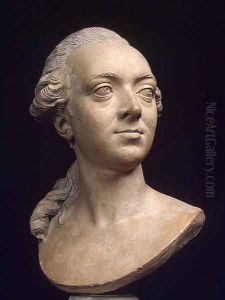Philippe-Laurent Roland Paintings
Philippe-Laurent Roland was a French sculptor who was born on December 20, 1746, in Pont-à-Marcq, France. He was notably active during the Neoclassical period, which was characterized by a return to classical ideals of beauty, harmony, and proportion. Roland received his initial artistic education in Lille, before moving to Paris to further his studies.
In Paris, Roland entered the Royal Academy of Painting and Sculpture, where he trained under the renowned sculptor Augustin Pajou. His talent was evident early on, and he won the prestigious Prix de Rome in 1775, which allowed him to study at the French Academy in Rome. This period in Italy was crucial for his artistic development; the study of ancient Roman and Greek art profoundly influenced his style.
Roland returned to France in the 1780s and established himself as a sculptor of note. He became known for his skill in sculpting portraits and mythological subjects, often working in marble. Roland's sculptures were marked by their elegance and adherence to classical principles, and he was adept at capturing the likeness and character of his subjects in portrait busts. He exhibited at the Salon, the official art exhibition of the Académie des Beaux-Arts in Paris.
During his career, Roland received various commissions for public monuments and decorative sculpture, contributing to the artistic landscape of the period. Despite the political upheavals of the French Revolution and the subsequent changes in power, he managed to maintain a successful career. Roland's work from this period reflects the changing tastes and ideological shifts of the time, as Neoclassicism was closely linked with the Enlightenment and revolutionary ideals.
Philippe-Laurent Roland's contributions to French sculpture were significant, and his works can still be seen in museums and collections today. He passed away on May 10, 1816, in Paris, leaving a legacy that has informed the understanding of Neoclassical sculpture. His adherence to classical ideals and his ability to imbue his works with a sense of life and emotion continue to be appreciated by art historians and enthusiasts alike.
